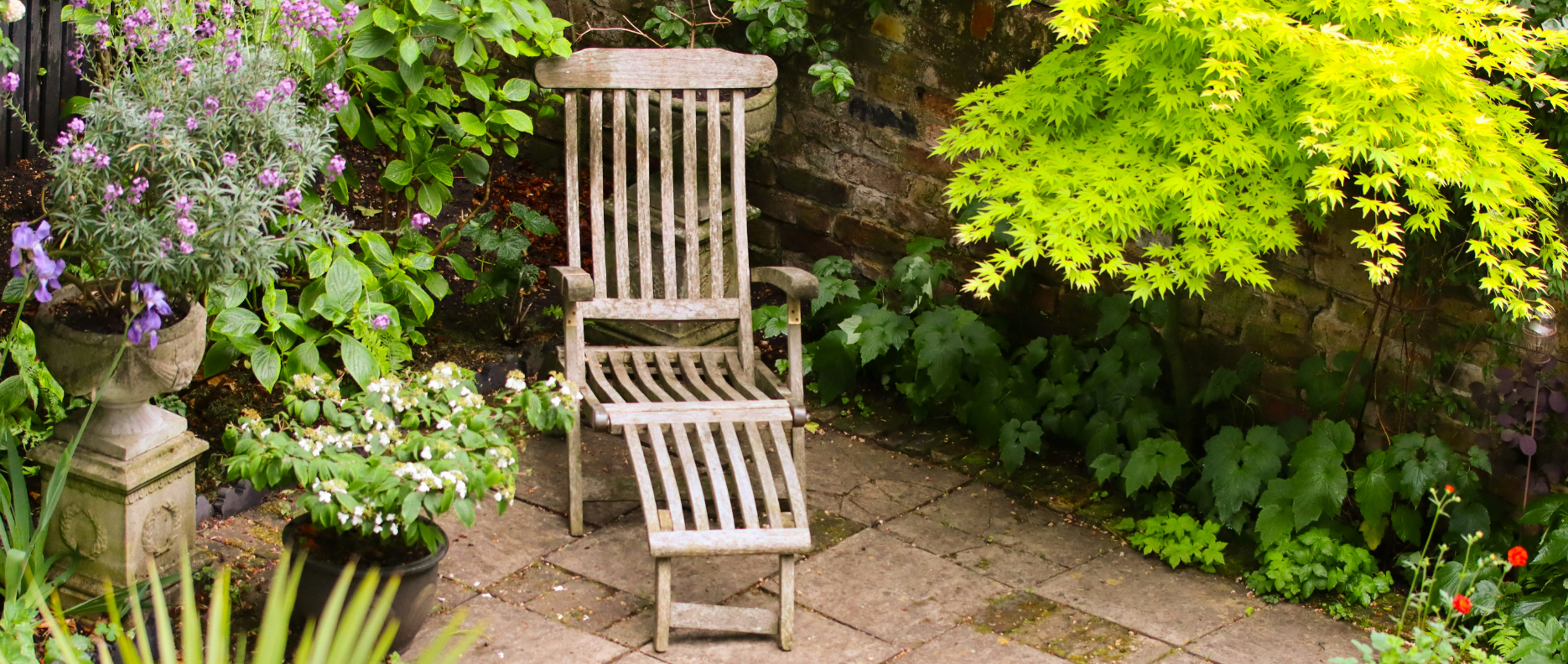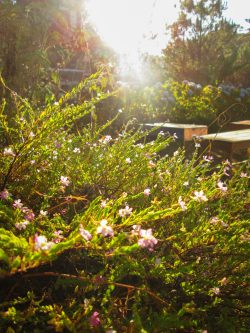An east-facing garden greets the morning sun and invites shade in the afternoon, offering a unique microclimate that can influence your plant choices and garden design.
Understanding the unique characteristics of an east-facing garden can help you create an outdoor space you can’t wait to spend time in.
In this article, we’ll explore everything from determining the orientation of your garden to selecting the perfect plants that thrive in the morning sun. With these tips, you’ll be ready to transform your east-facing garden into a vibrant oasis that celebrates every ray of sunlight.
How to Check if Your Garden is East-Facing
First things first, it’s important to determine the orientation of your garden to truly unlock its full potential.
To check if your garden is east-facing, simply observe where the sun rises.
The sun rises in the east, so if your garden is bathed in sunlight during the early morning hours, it’s likely east-facing.
For a quick and easy method, use a compass app on your smartphone. Stand in your garden, open the app, and it will show you which part of your garden faces east.
Landscape Gardeners Tip: Use a compass app to quickly identify your garden's east-facing side. Then, observe the morning shadows to fine-tune your design for the best light.
What to Consider with an East-Facing Garden
Designing an east-facing garden involves unique considerations. These gardens catch the gentle morning sunlight and may lie in partial to full shade during the afternoon.
- Morning Sunlight: Embrace the morning sun for plants that thrive in light but need protection from the harsh afternoon heat.
- Afternoon Shade: Plan for areas that will be shaded, perfect for relaxing during warmer days or for shade-loving plants.
- Moisture Levels: With less direct sun, these gardens may retain moisture longer, affecting plant and lawn care.
- Temperature Fluctuations: Morning warmth followed by cooler afternoons can influence plant choices and placement.
- Visual Interest: Consider how the changing light affects the appearance and ambience of your garden throughout the day.
Pros of an East-Facing Garden:
- It is ideal for plants that prefer cooler conditions or cannot tolerate full sun.
- Offers a comfortable retreat from the direct heat of the sun in the afternoon.
- Generally requires less frequent watering than south facing gardens.
Cons of an East-Facing Garden:
- Limited options for sun-loving plants.
- Potential for damp soil and moss due to reduced sunlight.
- May require more planning to achieve year-round visual interest.
Landscape Gardeners Tip: In an east-facing garden, layering is your best friend. Start with taller, shade-tolerant trees and shrubs at the back, and graduate down to lower flowering plants and ground cover that can enjoy the morning sun. This creates a lush, tiered look that's visually appealing and practical.
How Much Sun Do You Get in an East-Facing Garden?
The sun’s path changes with the seasons, affecting how much light your garden gets throughout the year.
Spring
As the days lengthen, your east-facing garden enjoys increasing hours of gentle morning sunlight. Expect around 4 to 6 hours of direct sun, as the sun rises earlier and sets later. This season offers a balanced light environment, ideal for spring blooms and early vegetables.
Summer
Summer months bring the longest days, with your garden basking in morning sunlight from sunrise until midday. East-facing gardens can receive up to 6 to 8 hours of sunlight before being shaded in the afternoon. This makes it a pivotal time for growth, especially for plants that benefit from cooler afternoons.
Autumn
Similar to spring, autumn provides a moderate amount of sunlight, with around 4 to 6 hours of direct morning sun. As the sun begins to set earlier, the intensity of the light decreases, preparing plants for the dormancy of winter.
Winter
During the shortest days of the year, sunlight is at a premium. Your garden may receive 2 to 4 hours of direct sunlight, if that, depending on your specific location and any structures or trees that may block light. This limited light can be crucial for evergreens and winter-hardy plants.
Landscape Gardeners Tip: Place sun-loving plants where they'll thrive in the morning light and shade-tolerant species where the sun's rays are softer. Remember, a garden's beauty lies in its adaptability to the changing seasons.
How to Make the Most of the Sun in an East-Facing Garden
With the morning sun offering a burst of light followed by shaded afternoons, positioning your plants and garden features wisely can create a harmonious balance that promotes growth and enjoyment throughout the day.
Here’s how to harness the unique lighting of your east-facing garden to its fullest potential:
- Create Morning Light Zones: Prioritise sun-loving plants in areas that catch the morning sun. These spots are perfect for vegetables and flowers that need a good dose of sunlight to thrive. Scroll down for east-facing plant ideas.
- Plan Shady Areas: Utilise the afternoon shade for plants that prefer cooler conditions. Ferns, hostas, and many flowering shrubs can flourish in these conditions, adding diversity to your garden.
- Plant Vertically: Climbing plants can thrive on walls and fences that receive morning sunlight. This can also add depth and interest to your garden design.
- Use Reflective Surfaces: Place light-coloured stones, garden art, or mirrors strategically to reflect morning light into shadier parts of the garden, enhancing light availability.
- Be Strategic With Seating: Position seating areas to enjoy the best of both worlds – sunlit spots in the morning and shaded areas in the afternoon – ensuring your garden is a comfortable retreat at any time of the day.
Landscape Gardeners Tip: Don't overlook the importance of soil and water management in an east-facing garden. Morning sun can dry out some areas quickly, while shaded spots may stay moist longer. Adjust your watering schedule and soil amendments accordingly to ensure all your plants get the environment they need to succeed.
East-Facing Garden Ideas
Transforming an east-facing garden into a thriving sanctuary requires creativity and understanding of the unique light conditions.
1. Sunrise Breakfast Nook
Transforming an east-facing garden into a thriving sanctuary requires creativity and understanding of the unique light conditions. Create a cosy breakfast nook in a spot that catches the early morning sun, creating a serene space to start your day.
- Incorporate a small table and comfortable seating.
- Surround the nook with aromatic herbs and vibrant flowers that thrive in the morning sunlight.
- Ideal plants are lavender and geraniums.
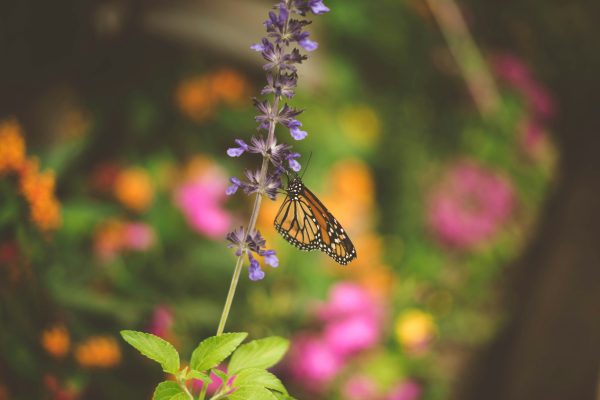
2. Shade-Tolerant Vegetable Garden
Increase your vegetable yield by choosing shade-tolerant varieties.
- Plan your vegetable beds where they will receive morning sunlight yet remain protected from the harsh afternoon rays.
- Ideal vegetables are lettuce, spinach and kale.
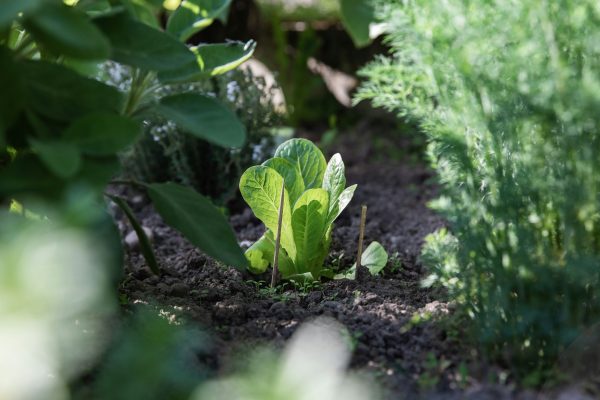
3. Dynamic Plant Borders
For east-facing borders, plant with a mix of sun-loving and shade-tolerant plants.
Position taller, sun-loving plants towards the back, where they can catch the morning sun.
- Position lower, shade-preferable plants in front.
- This creates a visually appealing gradient effect and a full day of flowering beauty.
- Ideal plants for the back row are lavender and salvia.
- Ideal plants for the middle row are fern and foxglove.
- Ideal plants for the front row are heuchera and primrose.
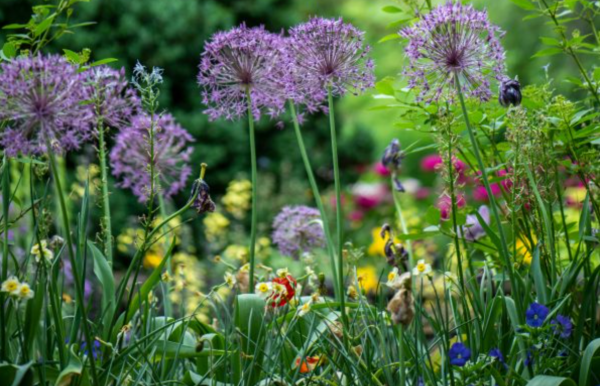
4. Reflective Water Features
Incorporate a small pond or reflective water feature that catches the morning light.
- A water feature will add brightness and the illusion of space.
- Water-loving plants around the edges can benefit from consistent moisture and partial shade.
- Ideal plants are water forget-me-not and marsh marigolds.
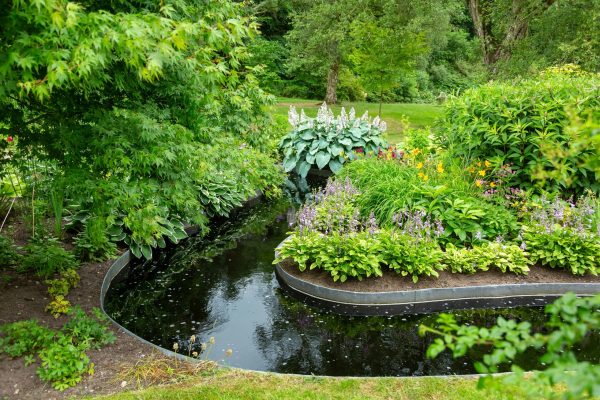
5. Garden Pathway Lined with Plants
Design a winding garden path that moves from sunlit areas to shaded ones.
- Line the path with plants that gradually transition from those requiring full sun to those that thrive in shade.
- For example, plant sunflowers in full sun, foxgloves in partial sun/shade and ferns in shade.

6. All Day Patio
Position a patio or decking area in a spot that enjoys the morning sun but becomes shaded later.
- Use this area for plants in containers that thrive in these conditions.
- Create a living, blooming border around your relaxation space.
- Ideal plants are camellias and azaleas.
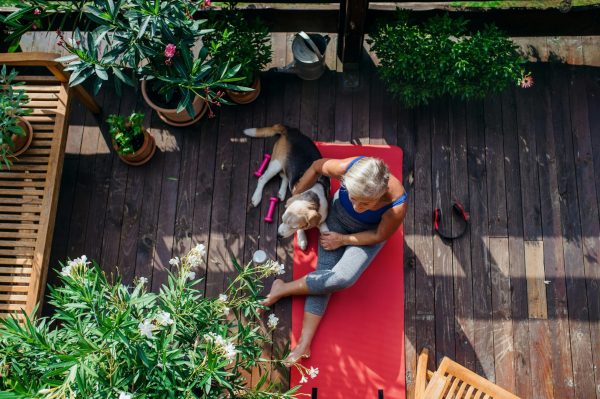
7. Climbing Plant Trellis
Install trellises on east-facing walls or fences for climbing plants that love the morning sun.
- Climbers will add beautiful blooms and vertical interest to your garden.
- Ideal plants are clematis and morning glories.
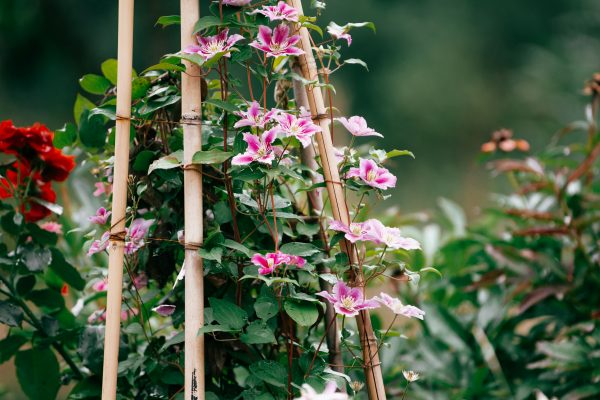
8. Woodland Shade Garden
Embrace the natural shade in your garden by creating a woodland-inspired area.
- Add a mulched path through the area to add a woodland feel.
- Plant shade-loving shrubs, ferns and perennials.
- Ideal choices are mountain laurel (shrub), maidenhair fern (ground coverage) and hostas (perennial).
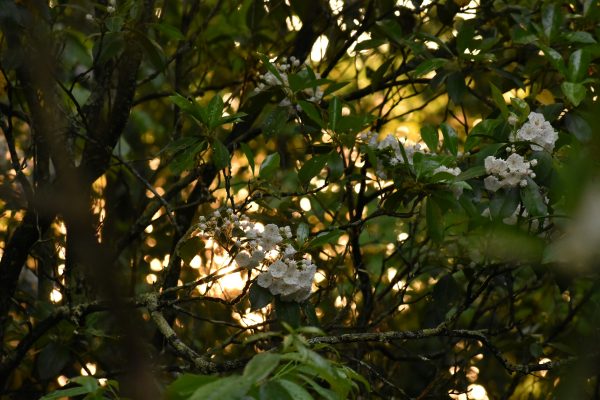
9. Sunlit Rock Garden
Use the brightest part of your garden to create a rock garden featuring sun-loving alpines and succulents.
- Choose the right plants. They need to be well-adapted to thrive in bright conditions and can handle dry soil.
- Ideal plants are sempervivum and alpine phlox.
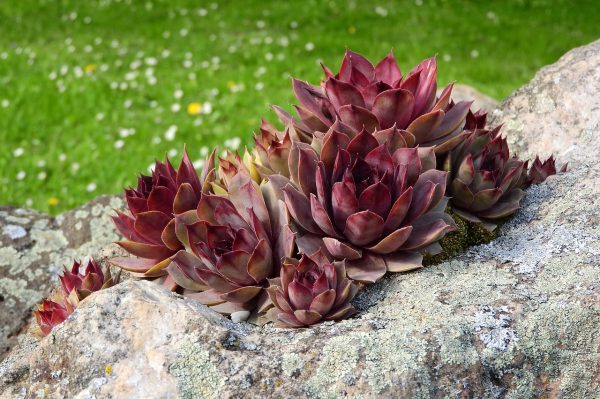
10. Shaded Lounge Area
Design a comfortable lounge area in the part of the garden that remains shaded in the afternoon.
- Use lush, shade-tolerant ground covers to create a green carpet.
- Add shade-loving potted plants for a pop of colour.
- Ideal ground cover plants are ivy or pachysandra.
- Ideal potted plants are caladium and begonias.
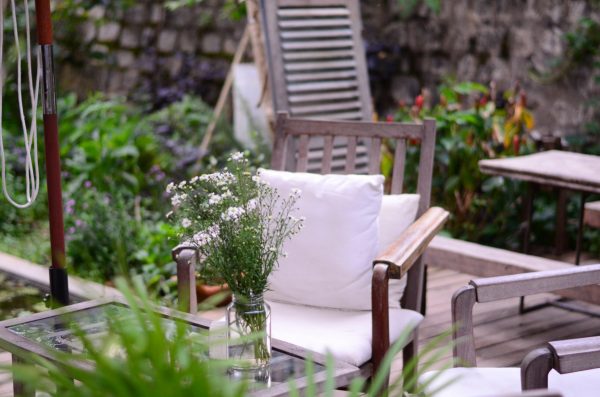
11. Seasonal Colour Roation
Plan your garden so that different areas come into their own in each season. This ensures your garden remains vibrant and interesting throughout the year.
- Use bulbs for spring colour in areas that will later be in shade, such as tulips and daffodils.
- Plant summer-flowering plants in the brightest spots, such as daylilies and hydrangeas.
- Add autumn bloomers, such as chrysanthemums and asters, where they can catch the late season.
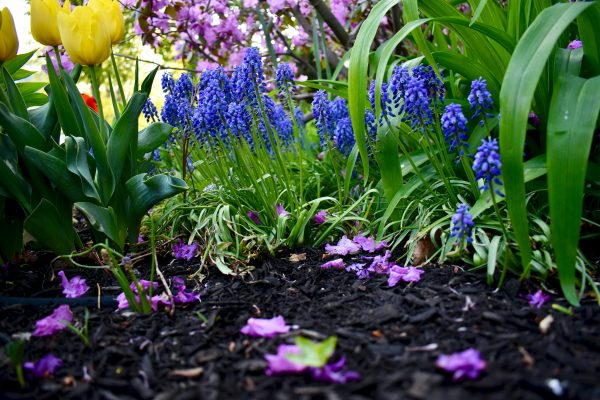
Landscape Gardeners Tip: Don't just think about what's blooming now; plan for the next season's show. When planting your spring blooms, intersperse them with summer and autumn flowering plants. This strategy ensures that as one plant's blooms begin to fade, another is ready to take its place, keeping your garden in a constant state of renewal.
FAQS About East-Facing Gardens
Here, we address some of the most common queries to help you make the most of your east-facing garden.
Is an east-facing garden good?
Absolutely! While some people deem east-facing gardens to be less valuable than south-facing gardens, they provide a lot of versatility. East-facing gardens benefit from the gentle morning sun, which is ideal for a wide variety of plants. While they avoid the harsh afternoon heat, making them perfect for plants that prefer cooler conditions.
How do you make a good east-facing garden?
Creating a thriving east-facing garden involves understanding the light patterns and choosing plants that flourish in morning sunlight and afternoon shade. A good east-facing garden plan incorporates a mix of shade-tolerant plants, moisture-loving species, and those that thrive in the cooler parts of the day. Also, consider creating zones for different activities and plant needs.
Does an east-facing garden get much sun?
Yes, but the sunlight is primarily in the morning. East-facing gardens enjoy several hours of sunlight as the sun rises, which can be ample for many plants. The garden will then be in shade during the hotter part of the afternoon, which can be beneficial for both plants and people.
What time does an east-facing garden lose sun?
This can vary depending on the time of year and your specific location, but generally, an east-facing garden starts to lose direct sunlight by midday to early afternoon and remains in partial to full shade for the remainder of the day.
Can you recommend a simple east-facing garden design?
A simple yet effective design for an east-facing garden includes a mix of perennial beds near the house to catch the morning sun, a shaded seating area for afternoon relaxation, and paths that weave through the garden, allowing you to enjoy the space from different perspectives. Incorporate varying heights with small trees, shrubs, and ground cover to add interest.
What are some small east-facing garden design ideas?
Vertical gardening can be a great way to maximise your garden area in small spaces. Use trellises for climbing plants that enjoy the morning sun. Container gardening is also ideal, allowing you to move plants around to take advantage of the light. Incorporate mirrors to reflect light and create the illusion of a larger space.
What plants are best for an east-facing garden?
Plants that thrive in morning sunlight and can tolerate or prefer afternoon shade are best. This includes many ferns, hostas, bleeding hearts, and astilbes for the shaded areas, as well as lavender, sedum, and daylilies for the sunnier spots. See above for more ideas.
How does the sun's path affect my east-facing garden in the UK?
In the UK, east-facing gardens benefit from the morning sun from the northeast, which is cooler and less intense than afternoon sun. As the season progresses from spring to summer, the duration and intensity of morning sunlight increase, offering more growing options.
What are some ideal east-facing front garden ideas?
Consider creating a welcoming entrance with architectural plants like ornamental grasses that glow in the morning light. Incorporating shade-loving shrubs such as hydrangeas can ensure lush, vibrant foliage and blooms even as the garden transitions into afternoon shade. Adding containers with a mix of annuals and perennials allows for flexibility and season-long colour.
Let Green Team Landscaping Design Your Dream East-Facing Garden
If you’re ready to bring these ideas to life, let Green Team Landscaping be your guide. Our expert North London team specialises in crafting bespoke garden designs that cater to your specific needs and aspirations. Visit our landscape gardeners page to learn more about how we can help build your dream garden.

